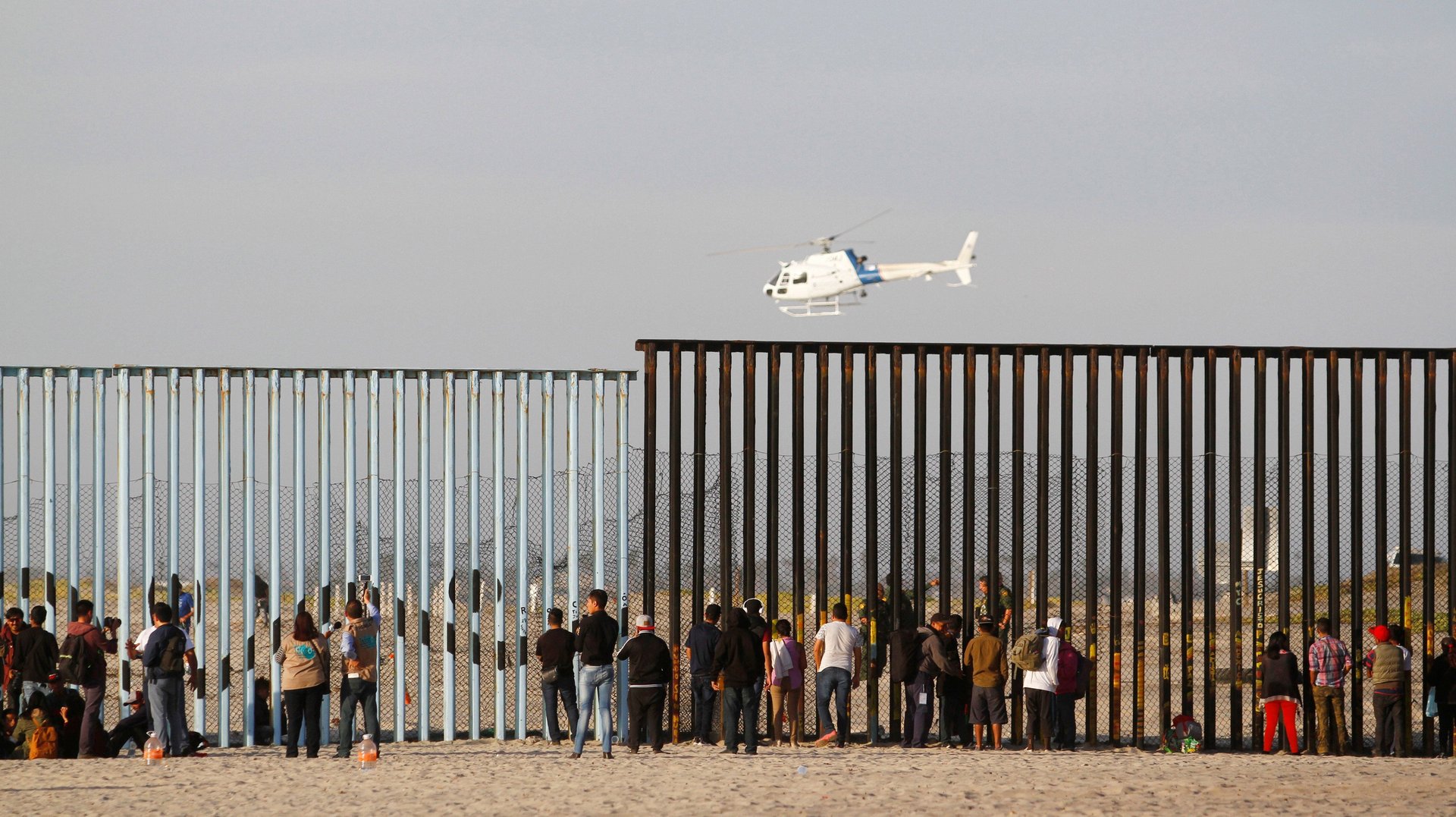Stopping the immigrant caravan also means slowing down trade
The Trump administration is fortifying the US border with Mexico ahead of the arrival of an immigrant caravan from Central America that the president says is a threat to national security. But his preparations are creating a threat of their own: an economic one.


The Trump administration is fortifying the US border with Mexico ahead of the arrival of an immigrant caravan from Central America that the president says is a threat to national security. But his preparations are creating a threat of their own: an economic one.
In trying to stop the immigrants, Trump is also slowing down trade. Customs and Border Protection officials in San Diego, California, and El Paso, Texas are warning of delays at border crossing points due to measures designed to block the caravan, including the installation of concertina wire and fencing.
Last week, the president issued an executive order that denies the right to apply for asylum to immigrants who don’t enter through official crossing points—the same facilities that handle cargo trucks, buses, and travelers. The change will increase the workload of CBP officials at ports of entry.
The Homeland Security Department has said it’s adding staff, but the announced delays are a sign that resources are tight.
From El Paso to California
El Paso is not expected to be on the caravan route, so CBP is deploying trained officers from that area to Arizona and California, according to CBP’s El Paso field office. With fewer staff, the three ports of entry near the city will take longer to handle incoming traffic of all kinds.
“We suggest reducing or consolidating your cross-border trips, and if you must cross the border, build extra time into your schedule to accommodate these expected delays,” said Hector Mancha, CBP’s El Paso Director of Field Operations, in a statement.
In the San Diego area, the delays are due to fencing and other barriers erected to prevent immigrants from coming in. At least three lanes will be closed at San Ysidro, the busiest land border crossing in the country; one will be closed at nearby Otay Mesa, which handles truck traffic.
The barriers won’t be removed until sometime after the caravan’s arrival, CBP said. It did not provide any other details.
The measures are part of the Trump administration’s efforts to deter the rising number of Central American immigrants fleeing poverty and violence. Many of them have been requesting asylum as soon as they cross the border. Immigration officials are required to hear their cases under US and international law, but there currently isn’t enough personnel to process them. That has resulted in a bulging backlog.
Trump’s recent measures, including the executive order and deploying nearly 6,000 troops to the border, appear to be an attempt to keep the immigrants from entering the country in the first place. (Though military personnel are forbidden by law to participate in law enforcement, they have been helping with logistics and tasks such as installing the barricades.)
Economic toll
Together, the affected ports of entry handle nearly $130 million worth of goods a day on average flowing in both directions. Excluding truck drivers, an average 220,000 people drive or walk through them every day.
Any disruptions in that traffic will have an effect on border economies, in which trade and Mexican visitors play a large role. In El Paso, Mexican shoppers account for 10% to 15% of retail sales, according to research from the Dallas Federal Reserve.
The manufacturing industries in both countries are also linked; parts and components often cross the border before they are assembled into a final product. That kind of trade fuels $6.2 billion a year in exports between the San Diego region and neighboring Baja California alone, according to a recent study commissioned by World Trade Center San Diego.
The effects of long wait times can reverberate as far north as Michigan, whose car industry is closely tied to Mexico’s.